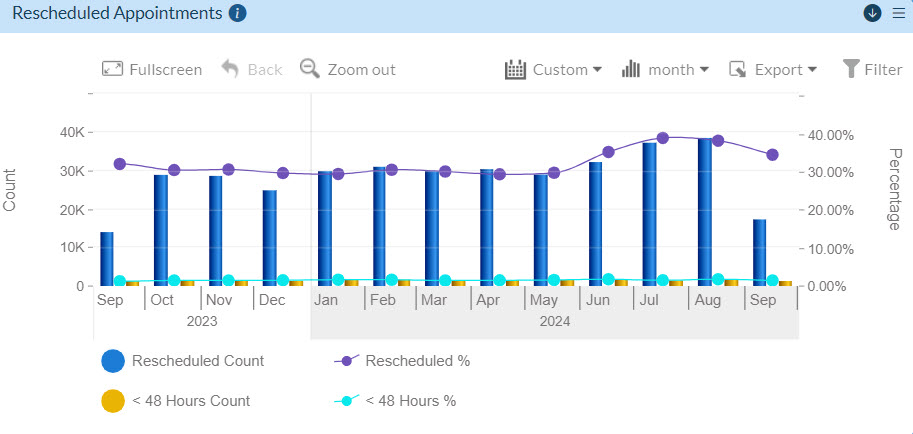
by Carrie Bauman
As a healthcare leader, you are well aware of the complexities surrounding data analysis and decision-making within your organization. Healthcare facilities face an ever-growing need to leverage data to enhance patient care, streamline operations, and drive financial sustainability. As the demand for smarter, faster, and more efficient solutions intensifies, you’re probably encountering two primary methods for healthcare analytics: traditional techniques and AI-driven approaches.
In this blog, we’ll dive into the comparison between AI data analytics and traditional methods, focusing on their implications for your healthcare operations, how AI-powered analytics is changing the landscape, and why it’s essential for you to start embracing these advanced technologies for better results.
For many years, healthcare organizations like yours have relied on traditional data management techniques. These methods often involve manual data entry, spreadsheets, basic reporting tools, and structured data sets. While these approaches served their purpose in the past, they are increasingly becoming outdated due to the sheer volume of data and the complexity involved in the fluid healthcare industry.

AI-powered analytics is rapidly changing the game. Unlike traditional methods, AI data analytics can process vast amounts of healthcare data, extract valuable insights, and predict future outcomes with precision. As AI technology continues to evolve, its applications in healthcare have become increasingly sophisticated, helping leaders like you tackle your toughest challenges and capitalize on new opportunities.
As the healthcare industry continues to adopt AI, a number of real-world applications are showing how these technologies are transforming the way healthcare leaders manage their facilities.
Revenue cycle management is an area where AI can provide immediate impact. AI revenue cycle analytics can track patient billing, identify claim denials, and predict future revenue trends with incredible accuracy. By leveraging predictive analytics in healthcare, you can make data-driven decisions that improve the efficiency and effectiveness of your RCM processes. This ensures you are capturing every dollar earned, minimizing revenue loss, and improving financial outcomes.
AI-driven operational analytics can significantly improve patient care by offering deeper insights into patient scheduling, optimizing appointments, and potential health risks. AI systems can assist healthcare professionals in identifying the most effective treatments, predicting patient visits, and recommending personalized care plans. This leads to better treatment results, improved patient satisfaction, and reduced readmissions.

From staffing schedules to inventory management, AI can optimize your operations by analyzing historical data and predicting future needs. By using AI-powered healthcare data management, you can streamline workflows, reduce costs, and ensure that your team has the right resources at the right time. This improves operational efficiency and allows your organization to provide better service while reducing overhead.
As you consider the future of healthcare analytics, it’s clear that AI data analytics platform is not just a trend but a necessity. The need for speed, efficiency, and precision in decision-making is growing, and traditional methods can no longer meet these demands effectively.
AI-powered analytics offers your organization the ability to process and analyze large volumes of data faster, more accurately, and in a way that is far more predictive. It enables you to tackle the challenges of today’s healthcare environment, from improving patient care to enhancing operational efficiency, all while maintaining financial stability.
Making the shift from traditional methods to AI-powered analytics can be daunting, but the potential rewards are well worth the investment. Here’s how you can start:
AI data analytics is driving the future of healthcare, and traditional methods are quickly being overshadowed by the capabilities and efficiencies offered by AI-powered analytics. As a leader in healthcare, it’s essential that you stay ahead of the curve by embracing these new technologies. By doing so, you can improve patient care, optimize your operations, and ensure the long-term financial health of your organization.
Now is the time to invest in AI-driven solutions that will help you harness the full potential of your data. It’s not just about staying competitive—it’s about creating a future where your healthcare facility thrives, powered by the intelligence of AI data analytics.
The landscape of healthcare analytics is shifting, and AI is leading the charge. As you evaluate your options, it’s essential to understand that the future is not about choosing between traditional methods and AI, it’s about how quickly you can embrace AI to unlock new possibilities for your organization. AI-powered analytics is no longer a luxury; it’s a necessity for success in the modern healthcare industry.
By adopting AI-driven solutions, you’ll empower your team, improve patient visits, and streamline operations, all while staying ahead of the curve.


2424 North Federal Highway, Suite 205
Boca Raton, FL 33431